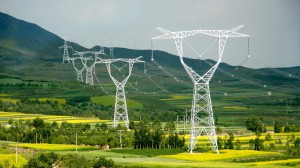From the north-western part to the southern province Guangdong, there are many new major renewable energy projects happening in China. Here an overview on the latest plans and developments.

From Simon Goess – Blog Global Sustainability
“New Energy Base” with 7.7 GW of renewables in Xinjiang
The National Energy Administration of China (NEA) has approved plans for the creation of the “New Energy Base Zhundong” in the Xinjiang Autonomous Region in the westernmost part of China. In total 7.7 GW of new renewable energy capacity is planned to be installed, 5.2 GW wind energy and 2.5 GW of photovoltaics. The transmission of the electricity generated by these renewables to Eastern China is to be achieved by the Zhundong-Huadong 1100 kV UHVDC transmission line, which is still to be approved (BJX).
Hydro power: China’s largest pumped-storage power station to be built in Guangdong
In order to build the country’s largest pumped-storage power station, China Southern Power Grid announced that it will invest 7.6 billion Yuan (€1.12 billion). The Yangjiang Pumped Storage Power Station project is part of the National Hydropower Development Plan and is located near to city of Yangchun in the south-west of the province Guangdong. The current power station has a capacity of 1.2 GW. It will be upgraded by three Francis turbines of 400 MW each and thus have a total capacity of 2.4 GW when finished. The hydro power plant is estimated to save 12800 tons of CO2 every year and acts as a grid “stabilizer” and “regulator” by shaving peak load demands and supporting electricity system needs (CEC).
Wind power utilization in the North China Power Grid rose by 21%
From January until October 2015, the North China Power Grid announced that the utilization of wind power increased by almost 21% year-on-year. Especially the strong winds in April this year helped to raise the utilization to a total 51.2 TWh by the end of October. Currently, the North China Power Grid accommodates 33% of the country’s installed wind energy capacity, so 35.4 GW. In addition, the installed capacity for photovoltaics reached 5.9 GW. More grid interlinkages between provinces along with better forecasting, scheduling and dispatch strategies allowed for a more efficient integration of renewable energies according to the grid operator (BJX).



